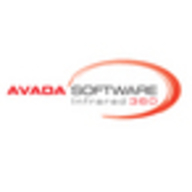

Avada Software Infrared360 and AWS Auto Scaling compete in managing and optimizing IT infrastructure. AWS Auto Scaling has the upper hand due to its comprehensive features and strong user reviews.
Features: Avada Software Infrared360 includes monitoring capabilities, integration options, and a straightforward deployment model. AWS Auto Scaling offers automatic scaling, flexibility features, and extensive customer support.
Room for Improvement: Avada Software Infrared360 needs a more intuitive setup process, expanded documentation, and improved user interface. AWS Auto Scaling faces occasional latency issues, complexities in configuration, and a steep learning curve.
Ease of Deployment and Customer Service: Avada Software Infrared360 provides straightforward deployment and responsive customer service. AWS Auto Scaling is more complex to deploy but benefits from AWS's comprehensive customer support.
Pricing and ROI: Avada Software Infrared360 has an attractive setup cost and swift ROI, making it cost-effective for smaller enterprises. AWS Auto Scaling has higher initial costs but delivers substantial long-term ROI, suitable for larger organizations willing to invest more upfront.

Avada Software specializes in Enterprise Middleware solutions. Founded by some pioneers in SOA, MQ and J2EE technology, Avada’s Flagship product, Infrared360, is a holistic & innovative private cloud enabled portal providing self-service administration, monitoring, load testing, auditing & statistical reporting for Enterprise Middleware including IBM’s middleware stack of MQ, IIB (message broker), WAS, and Datapower, as well as other applications servers such as JBoss, TC Server, Weblogic, and other messaging technologies such as Tibco EMS and Kafka*.
Accessed via any web browser on any device, Infrared360 is a single web application, yet scales to 2500+ endpoints without deploying anything (no agents, no scripts) to those endpoints.
Using trusted ‘spaces’ and delegated visibility and control, the portal uniquely provides different business units or even different application users virtual ‘spaces’ in which to work. Within those spaces are only the objects and resources the user has been granted visibility. Role policy dictates permissions on those resources.
It is the ONLY Enterprise Messaging Solution with a built in SOA engine that lets you leverage internal and external services for managing and correcting problems within your middleware messaging environment.
*Kafka coming soon
AWS Auto Scaling monitors your applications and automatically adjusts capacity to maintain steady, predictable performance at the lowest possible cost. Using AWS Auto Scaling, it’s easy to setup application scaling for multiple resources across multiple services in minutes. The service provides a simple, powerful user interface that lets you build scaling plans for resources including Amazon EC2 instances and Spot Fleets, Amazon ECS tasks, Amazon DynamoDB tables and indexes, and Amazon Aurora Replicas. AWS Auto Scaling makes scaling simple with recommendations that allow you to optimize performance, costs, or balance between them. If you’re already using Amazon EC2 Auto Scaling to dynamically scale your Amazon EC2 instances, you can now combine it with AWS Auto Scaling to scale additional resources for other AWS services. With AWS Auto Scaling, your applications always have the right resources at the right time.
We monitor all Application Performance Monitoring (APM) and Observability reviews to prevent fraudulent reviews and keep review quality high. We do not post reviews by company employees or direct competitors. We validate each review for authenticity via cross-reference with LinkedIn, and personal follow-up with the reviewer when necessary.